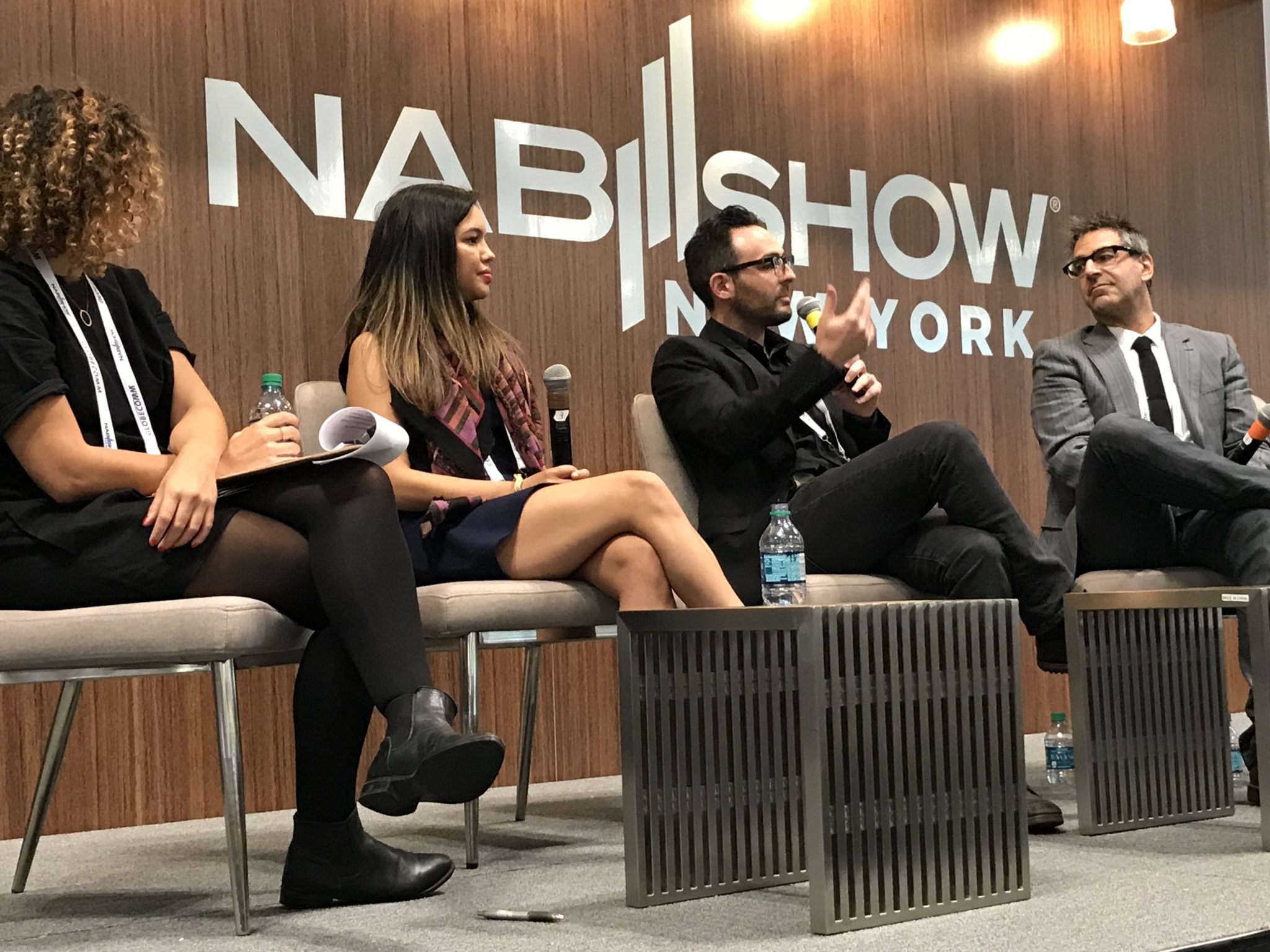On the quickly transforming commercial media landscape, the most difficult change to deal with can be change itself. That was the general feeling of representatives from a range of forward-thinking production companies who sat on a panel discussion at NAB New York titled “Hybrid Studios and the Digital Age” moderated by Telly Awards Managing Director Sabrina Dridje.
For example, Kevin Robinson remembered founding Brooklyn content agency Juniper Jones in October 2012 as a VFX company making network TV commercials. Five years later, the business has changed so completely that the work that used to be his bread and butter is now being done in-house. That’s not a terrible thing — “the VFX margins were bad,” he notes — since Juniper Jones has been able to reinvent itself by producing branded content for Epix, National Geographic Channel, Scripps Networks and Viacom, among other clients.
Keeping up is a challenge as brands expect their stories to be featured on distribution channels that go beyond traditional TV to reach multiple screens. That has fundamental design implications, with skeuomorphic designs falling by the wayside in favor of “a flatter, clean look for different screens,” Robinson said. “We’re not just thinking about that big TV screen. We’re thinking about mobile, and about how it translates to experiential. The way of thinking about content has totally shifted.”
TV screens were 4×3 for many years, and now they are 16×9, but outlets like Apple News and Facebook Live have specific formatting requirements, and the only thing you can really count on when creating content for them is that those requirements will change. “We re-evaluate our workflow every six to eight weeks,” said Eric Korsh, president of Mashable Studios. “It’s driven by the mechanics of the platforms. And, as you build your team and increase the amount of content you need to make, you need to re-imagine your workflow.”
Chloe Gingrich, creative strategist for the T Brand Studio at The New York Times, added that it pays to keep close track of how consumer sentiment is shifting. “Look at Vine,” she said. “They were the hottest thing, and then they went away. Look at the consumer as the ultimate decision-maker about whether you’re profitable in your business.”
Taking a question from the audience about budgets, Korsh couldn’t resist cracking a joke. “In high school,” he said, “you learn that a gas expands to fill the space provided.” Robinson called $50,000 a “get-out-of-bed cost” and said budgets can range from that up to $500,000, and Korsh agreed that’s at the high end. “We do work at that level that packages the audience along with it,” he said.
Asked what the most important skill is for success, Robinson emphasized the need to adapt and work quickly. “Speed is the major commodity right now,” he said. “If you cling to what’s cool three months ago, that shit’s dead now. And you can’t just be one thing any more. Our executive producer is also a writer. He’s also a creative. And he manages budgets.”
“You need to stand for something as a brand,” said Korsh, citing Vice and Refinery29 as examples of digital media companies with exceptionally strong brand identities.
And Gingrich agreed: “There is an oversaturation of content creators in the marketplace,” she said. “Know what you’re good at.”
